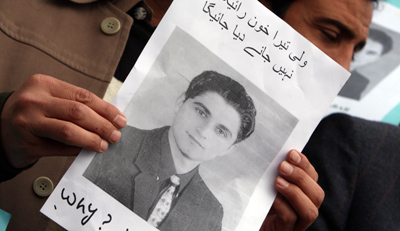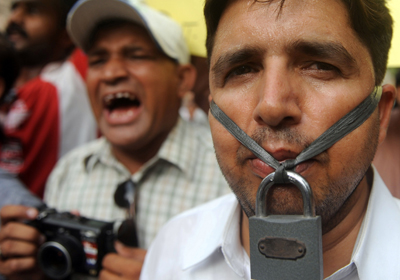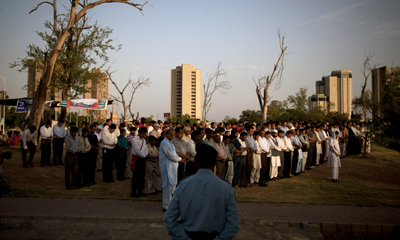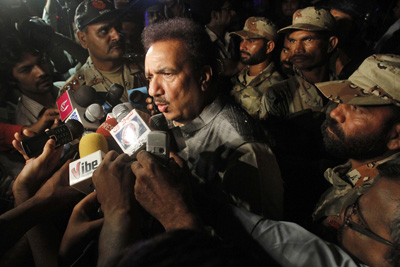
Why I fled Pakistan
In May 2006, at the age of 23, I joined the Daily Times, Pakistan’s most liberal English-language newspaper, as a bureau chief. I was perhaps the youngest bureau chief to cover the country’s largest province, Baluchistan, and its longstanding, deadly insurgency. I covered fierce military operations, daily bomb blasts, rocket attacks, enforced disappearances, torture of…

From Karachi to New York: A tale of fear, loss, and hope
On Monday, a well-known Pakistani journalist came to our office in New York. We had been messaging and texting for a few weeks, so I knew what to expect. Despite the harsh reality check that CPJ’s Sheryl Mendez and I offered during our 90-minute meeting, he is going ahead with the process of applying for…

Baluchistan’s press under siege
Reporters in Pakistan’s conflict-stricken province of Baluchistan have been organizing to display their anger against the continued death threats they have been receiving from government secret services, religious militant groups, and armed nationalist organizations. Their most recent demonstration on October 1 was only one in a string of protests to confront the problem.

A killing field: The targeting of journalists in Pakistan
For the past several weeks, CPJ’s Asia and Journalist Assistance programs have been in regular contact with local and international organizations who are concerned about the rising number of journalists and media workers at risk in Pakistan. CPJ and several other groups are working together on viable, in-country solutions: Journalists in Pakistan are in need…
Threats against Pakistani journalists: A reality check
In a blog entry on August 5, “Quantifying the threat to journalists in Pakistan,” CPJ’s Sheryl Mendez and I tried to measure what seems to be a rising number of threats aimed at journalists in Pakistan. We wrote about how the problem is rapidly growing as Pakistan’s security situation worsens and the civilian government appears…

Quantifying the threat to journalists in Pakistan
For many journalists working in Pakistan, death threats and menacing messages are simply seen as part of their job. But since December 2010, CPJ’s Journalist Assistance Program (JA) has processed requests for help from 16 journalists in Pakistan who are dealing with threats. Others have told us of threats they have received in the event…
More safety guidelines for Pakistan’s field reporters
Pakistan’s journalists, watching the domestic stories they are covering become increasingly more dangerous, have started taking safety matters into their own hands. Zaffar Abbas, editor at the English-language daily Dawn, just forwarded to me a safety guide for journalists he has been circulating around his paper. His explanation:

For safety’s sake: New journalist safety rules in Pakistan
I got an early version of the Khyber Union of Journalists’ (KhUJ) list of safety rules and tips for field reports around June 16, after the June 11 double bomb in a crowded market that killed two journalists in Peshawar. Yousaf Ali, KhUJ’s general secretary had forwarded the list. It was quickly drawn up after…

Karachi might be more dangerous for media than FATA
Karachi, Pakistan’s economic hub, is one of the country’s main media centers, with more than 2,000 journalists and the head offices of leading media organizations. Journalists in the city have come under attack before, with seven journalists killed there since 1994. But the situation was never as dangerous as it has been this past year.
A legal attack accompanies assault on Pakistani journalists
Concerned that so many Pakistani journalists have been threatened, abducted, killed, or beaten recently? So are they. When I was in Karachi and Islamabad in late April and early May, I found that they are starting to take steps to protect themselves with increased safety training and protective gear at the larger media houses that…